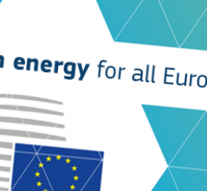
2018: Taking Stock of the Energy Union
Energy 25 April 2018Over the past 10 years, the European energy policy has faced a confrontation between the Central and Eastern European (CEEC) and the Northern and Western EU Member States, which has prevented the European Union (EU) from swiftly advancing its decarbonisation and CO2 reduction strategy. On one side, some Member States such as Germany and Denmark lead a group of environmentally and climate friendly governments within the EU and have pushed for the Commission’s decarbonisation strategy. On the other side, the Visegrád States (Poland, Slovakia, Czech Republic and Hungary) and Bulgaria in particular, as well as Romania, under the leadership of the Polish government, opposed the new targets and insisted on national sovereignty over decisions on their national energy mix, a limited role for the EU and on prioritising the goal of energy supply security.
Europe’s energy transition is certainly well underway, but has the progress on bringing the Energy Union project to life been fast enough? It has been three years since the European Commission announced its Energy Union plans, and while not everything is in place yet, the Commission has delivered its part as promised. Some may argue that not all proposals put forward have been as future–proof and ambitious as originally planned. The latest example is the Clean Mobility Package, where the Commission has attempted to find the right balance between ambition and realism.
We are now at a “critical juncture”, as it is up to the Member States and the European Parliament to conclude the work on the Clean Energy Package and to start discussing the Clean Mobility Package. To be successful and reach a swift agreement, they need to “redouble their efforts,” says the Commission.
Labelled as the “Year of Engagement”, 2018 should see the start of mobilising the society. While a wide engagement will be key, particularly one year ahead of the next European elections, a lot, however, remains to be delivered for the Energy Union to become a reality. Inter–institutional negotiations for key Clean Energy files have not yet started and will only kick–off in 2018, and swift agreement between Member States and the European Parliament is highly unlikely on most of these files. Add to this that the proposals on the Clean Mobility Package is still to be launched, 2018 will have to continue to deliver tangible results.
The main message of the latest State of the Energy Union report is that Europe still faces quite some hurdles when it comes to integrating its energy markets and modernising its energy infrastructure. So far, only 17 Member States have reached 10% interconnections target set for 2020, the electricity markets continue to struggle to integrate new technologies and demand side response services, and many “energy islands” persist. Looking beyond 2020, the Commission now proposed three operational thresholds to meet a new 15% interconnections target by 2030, each of them corresponding with one of the energy goals of sustainability, security of supply and competitiveness. The aim is to monitor the progress in a more transparent way and identify areas where Member States may lag behind.
The main tool for reaching the target is through the implementation of Projects of Common Interest (PCI), key infrastructure projects that support EU climate and energy goals and can therefore count on EU funding. In line with recent pledges, the unveiled third PCI list includes an unprecedented number of electricity and smart–grids projects (110 out of 173), aimed at integrating renewables into the grid or improving grid’s resilience and flexibility. To industries’ satisfaction but NGOs’ despair, the European Commission will also continue to fund 53 gas projects and 6 oil projects, reaffirming that energy security and competitiveness remain at the top of EU priorities alongside climate change. Moreover, the list of PCIs includes – for the first time – four cross–border carbon dioxide network projects. This sends a strong signal that the European Commission has not lost hope in the potential of carbon capture and storage (CCS). Although praised for its role in limiting CO2 emissions, the CCS technology has so far seen little progress worldwide and not moved beyond a handful number of demonstration projects due to its high investment costs.
The changing geopolitics of the energy market and the momentum spurred by the Paris Agreement are shaking up the global energy landscape. If the EU aspires to demonstrate its low–carbon leadership and enjoy “first mover” advantages in this critical juncture, it needs to make its Energy Union project a success story. Yet many challenges prevail. Member States still need to finalise their draft post–2020 integrated national energy and climate plans by early 2018. It also remains to be seen how quickly Member States and the European Parliament can find a common ground on the Energy Union policy files.
The agenda is tough and the 2019 European elections are about to come…


